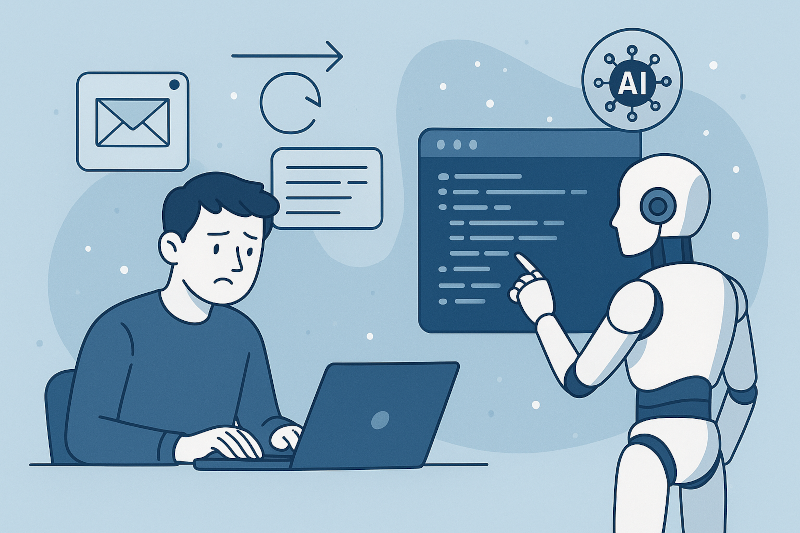AI Writes code faster — But coding speed isn't the issue
AI agents are making it easier than ever to crank out working code, but the real bottlenecks in software development remain unchanged.

Code was never the problem — Context Switching is
AI agents are making it easier than ever to crank out working code. Backend endpoints, UI scaffolds, infrastructure setups — you name it, you can have an agent spit it out in minutes. But if you think this will make software development faster overall, you’re in for a surprise.
Writing code was never what slowed teams down. The real bottlenecks have always been what happens after the code gets written: reviewing, understanding, debugging, maintaining, and coordinating. AI just shifts where the time sinks happen — and in many cases, makes them worse.
Now we’ve got LLMs writing code faster than ever, and suddenly people are acting like we finally cracked it. Like the problem was ever “not enough code.”
It wasn’t. It isn’t. And it’s about to get worse.
Quick note: this isn’t an anti-AI rant. I use LLMs daily and love them. But let’s be real about what they do and don’t solve in software development.
The cost of code is shifting, not disappearing
The marginal cost of generating code is rapidly heading towards zero. But the cost of understanding that code? Higher than it’s ever been.
You can use Claude, GPT, or whatever comes next to throw together entire features in minutes. But that just means more code flowing through your system, faster than your team can realistically review, test, or even read it. The bottleneck has shifted to validation, maintenance, and comprehension.
It’s not just “more code faster”, it’s more unfamiliar code, inconsistent patterns, and subtle bugs hiding in plain sight.
AI Agents don’t reduce work — They fragment it
If you think AI will free up your time, here’s a reality check: future engineers won’t be working on fewer things — they’ll be juggling more.
You won’t just have one agent helping you. You’ll spin up multiple agents in parallel, each tackling different problems or products.
- Spin up agent #1 to draft some backend endpoints.
- While it runs, context switch to agent #2 writing a marketing script.
- Meanwhile, kick off agent #3 to do infrastructure planning.
- Switch back to agent #1 to review what it spit out.
- Jump to agent #2 to fix hallucinations.
- Rinse and repeat.
Congratulations, you’ve just multiplied your context switches per hour.
Code is cheap, context is expensive
The actual bottleneck in modern software development is context. Understanding why the code exists, how it fits together, and what the side effects are — none of that gets easier with LLMs.
If anything, it gets worse when:
- Code is generated without shared reasoning behind it.
- Reviewers don’t know what problem the code was meant to solve.
- Teams skip discussions because “the AI already wrote it.”
You can generate ten times more code, but you’ll still need the same alignment, the same architectural discussions, and the same careful decision-making — just with more material to wade through.
LLMs are tools, not a shortcut to good software
Sure, you can scaffold faster. You can prototype faster. But production code doesn’t get better because it was generated faster.
The fundamentals don’t change:
- Clear thinking matters more than ever.
- Reviewing code is harder, not easier.
- Explaining code to future teammates still takes time.
If you skip the fundamentals, you just create faster tech debt.
Writing code is easy, building software is hard
The cost of typing code has fallen. The cost of building good software has not.
The real work was always about understanding, reviewing, mentoring, and maintaining.
That’s still the bottleneck.
And now, with a dozen AI agents in the mix, your brain is going to be the real limiting factor.
Plan accordingly.
